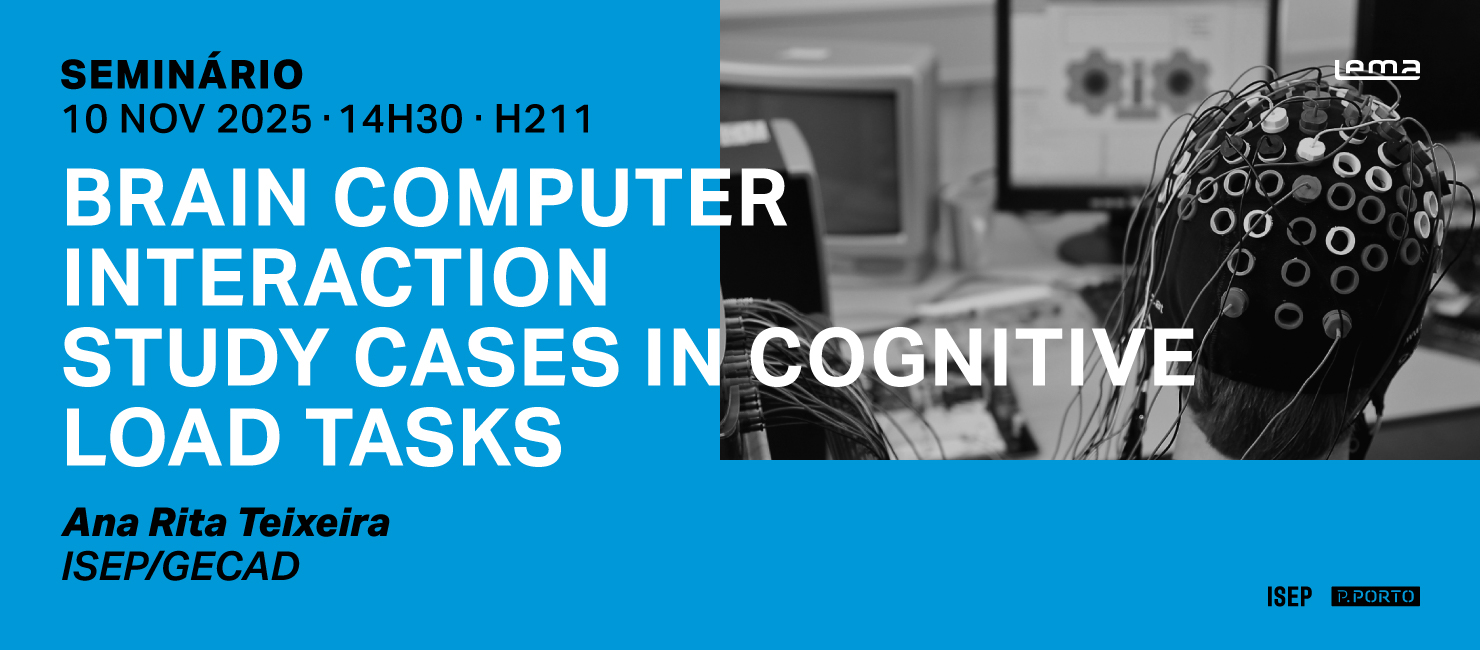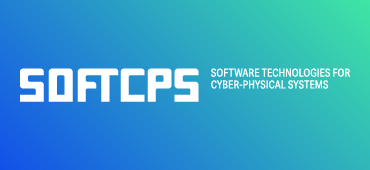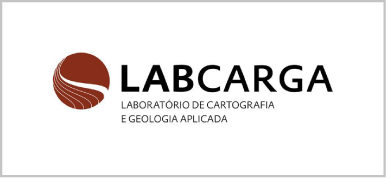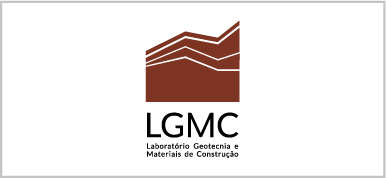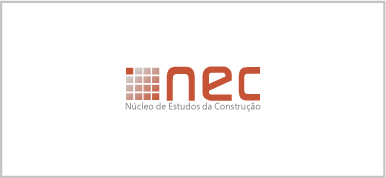.jpg)
On November 10, at 2:30 p.m., a seminar in Mathematical Engineering will be held, entitled “Optimizing Brain Computer Interaction – Study Cases in Cognitive Load Tasks”, promoted by the Mathematical Engineering Laboratory (LEMA) of Instituto Superior de Engenharia do Porto (ISEP).
The event, which will take place in room H211, will feature guest speaker Ana Rita Teixeira, professor in the Department of Informatics at ISEP and member of the Research Group on Engineering and Intelligent Computing for Innovation and Development (GECAD).
Abstract
Brain-Computer Interface (BCI) is a way of interaction between individuals and computers by not using any muscle, controlled through individuals' brain activity captured with specific equipment. BCI is used to quantify Central Nervous System (CNS) activity, converting it to artificial output that is then used to replace, restore, enhance, supplement, or improve natural CNS output. Through the acquisition of brain signals, BCI identifies patterns and produces actions based on these patterns, allowing users to interact with the environment without having to use peripheral nerves and muscles.
Brain computer interfaces (BCI) have been applied in several fields of research from medical field, smart environments, Internet of Things, neuromarketing and advertisement, educational and self-regulation, games and entertainment and security or authentication fields. BCIs depend on sensors and associated hardware whose function is to acquire brain signals. To this purpose, we resorted to a device using the non-invasive EEG (electroencephalography) technique. The application of EEG based systems in learning contexts is still not common, the number of studies on this topic is relatively small and the studies that can be carried out have enormous potential in this area. However, before moving on to a complex field such as education, we carried out a set of preliminary studies that analyze individuals performing tasks with some cognitive load.
Using the EEG signal and BCI devices, we evaluated several parameters of interest (Attention, Concentration, Fatigue, Immersion and Stress). This work allowed to access several parameters, through a series of studies, using devices with a reduced number of channels, in different types of tasks. The tasks analyzed were individuals driving and operating other side distractive tasks; individuals using different computer games with and without sound; individuals engaged in a programming problem-solving oriented task activity; individuals comparing different typefaces or colors in complex figures and individuals performing the Raven matrices test.
Short bio
Ana Rita Assunção Teixeira is a Professor at the Informatics Department of ISEP – Polytechnic Institute of Porto. She holds a PhD and a MSc in Electronic Engineering from University of Aveiro, and a BSc in Mathematics from University of Porto. She was the Coordinator of the Master’s in Human-Computer Interaction and the Coordinator of the Design and Multimedia Communication course at Coimbra Higher School of Education.
She is a member of the Biomedical Informatics and Technologies (BIT) research group at the Institute of Electronics Engineering, University of Aveiro, as well as a member of the Research and Innovation in Education (INED) and member of GECAD (Intelligent Engineering and Computing for Advanced Innovation and Development) at ISEP. Her research focuses primarily on Assistive Technologies and Human-Computer Interaction, as well as Signal Processing Methods and Applications.
